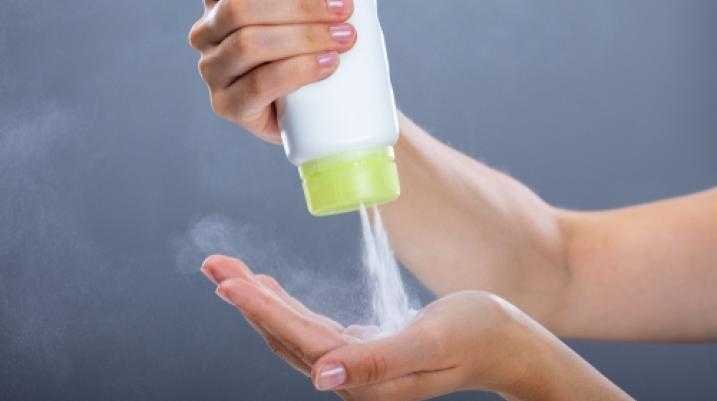In Talcum Powder Lawsuits, Johnson & Johnson Offers $8.9B to Settle

On Tuesday, April 4, after a legal fight that has lasted more than a decade, Johnson & Johnson (J&J) said that it had proposed to pay $8.9 billion to tens of thousands of victims who claimed the company's talcum powder products caused cancer. If a bankruptcy court approves the proposed settlement, the settlement will resolve all current and future claims involving the Johnson & Johnson products that contain talc. The settlement will be paid out over 25 years through a subsidiary that filed for bankruptcy in order to enable the $8.9 billion trust.
More recently, another bump in the road has hit, as the Talc cancer claimants have asked a judge to dismiss the Chapter 11 case filed by LTL Management LLC, saying the company is not financially distressed. In January, the 3rd Circuit dismissed Johnson & Johnson's first Chapter 11 case after they deemed that the company was not eligible for bankruptcy relief as it failed to show financial distress. This time around, due to some skepticism, claimants are arguing that the LTL's second attempt at a Chapter 11 case is an abuse of the bankruptcy system.
Through this, Johnson & Johnson claims that their $8.9 billion settlement offer continues to have significant support from the firms that are representing 70,000 to 80,000 claimants, which is enough to meet the 75% voting threshold required for a bankruptcy court to approve the settlement. Regardless, U.S. Bankruptcy Judge Michael Kaplan has ruled to place a temporary hold on the lawsuits until mid-June while more investigations are underway. Until then, new suits may be filed against Johnson & Johnson regarding their talc products.
The lawsuits geared toward Johnson & Johnson mainly focus on its products that contain or previously contained talcum(talc.) The first lawsuit came from a 49 years old woman who filed a lawsuit against Johnson & Johnson in South Dakota District Court after she was diagnosed with ovarian cancer. Before she was diagnosed, the woman had used Johnson & Johnson baby powder, which contained talc, between her legs every day for 30 years. A number of doctors had discovered talc particles embedded in cancerous tissues removed from the woman's body.
So naturally, her suit claimed that the talc found in the Johnson & Johnson baby powder had caused her cancer, and she argued that J&J needed to and should have placed warnings about the link between talc and ovarian cancer on its products' labels. While the court did not claim that talc was the cause of her cancer, they saw enough evidence to support the link between the two and to require J&J to warn women about the risk. Since this case, it has opened up the floodgates for victims to come forward and file lawsuits against Johnson and Johnson for their failures to warn women about the dangers of talcum powder that could have saved thousands of lives.
Due to the mass amounts of lawsuits that have been incurred against the company, in 2020, J&J announced that it would stop selling its talc Baby Powder in the United States and Canada, and in 2023 it would halt all sales of the talc-containing baby powder due to safety concerns and fall of product demands. However, to this day, Johnson & Johnson insists its baby powder is safe. As mentioned above, the company is currently attempting to offer $8.9 billion to settle claims brought by people who say asbestos contamination in the talcum powder caused their cancers.
What is Talc?
Talc is a naturally occurring mineral that is a combination of silicon, oxygen, hydrogen, and magnesium and has both a crystalline structure and a silicate mineral. When milled, it is made into what we know as talcum powder. Due to its absorbent quality, companies use the powder to create products that help keep the skin dry, products like baby powder or even face makeup.
The dangers behind talc come from its origins since it is often found alongside asbestos in nature. Asbestos is a substance that has been well documented in causing severe and even life-threatening health issues. Because of this, the use of asbestos is restricted in the United States, but the restrictions are limited. When talc is mined from areas containing asbestos, the possibility of cross-contamination comes into play, which can result in the presence of asbestos in talcum powder that ends up in the everyday products we use.
While the U.S. Food and Drug Administration has set guidelines regulating the use of talc in cosmetic products, it doesn't stop companies from using talc that has been cross-contaminated with asbestos. Unfortunately, products with talc have been linked to severe health issues, including ovarian cancer, endometrial cancer, cervical cancer, breast cancer, and more. However, talcum powder's relationship with ovarian cancer is not a recent discovery–studies on the substance date all the way back to 1971. Yet despite the numerous studies over more than four decades, talcum baby powder manufacturers have continued to deem the research inconclusive, leaving thousands of victims to suffer the deadly consequences.
Rounding out our main concerns regarding the lawsuits, many critics believe that if J&J succeeds, other companies facing a flood of lawsuits could use their Texas two-step to limit their liability. Since the cases began, J&J has reformulated its baby powder so it is no longer made with talc, which carries the potential for asbestos contamination. Instead, the baby powder being manufactured today is created with cornstarch.
For more information regarding this lawsuit, or if you have been affected by J&J talc products, we may be able to help you. Victims can contact our attorneys today by completing our free, no-obligation case evaluation form.
Injured? Getting the compensation you deserve starts here.

Injured?
Not sure what to do next?
We'll guide you through everything you need to know.